'Therapy for the Senses’, Aromatherapy is known as the art and science of utilising naturally extracted aromatic essences from plants to balance, harmonise and promote the health and wellness of body, mind and spirit.
About Aromatherapy
For thousands of years civilisations around the world have enjoyed the beautiful fragrances and benefits of the many natural elements found in nature. Today, these many benefits and traditions can be experienced with Aromatherapy.
THE HISTORY OF Aromatherapy
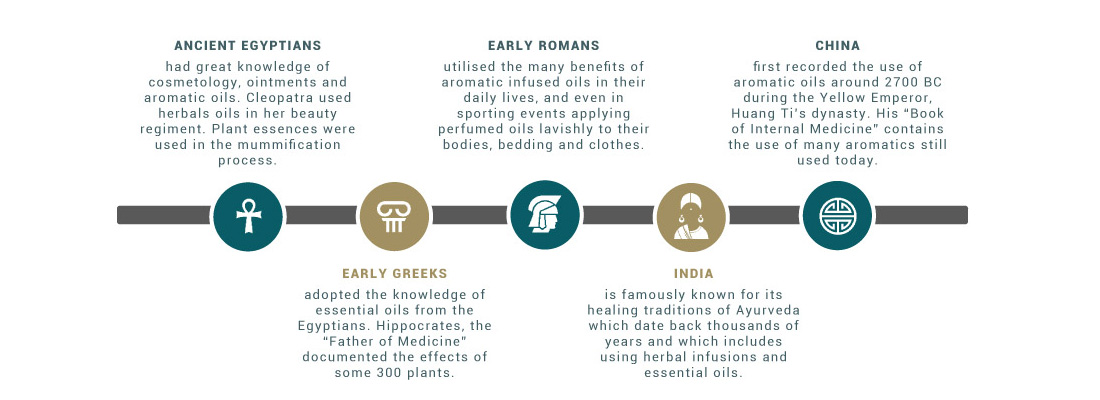
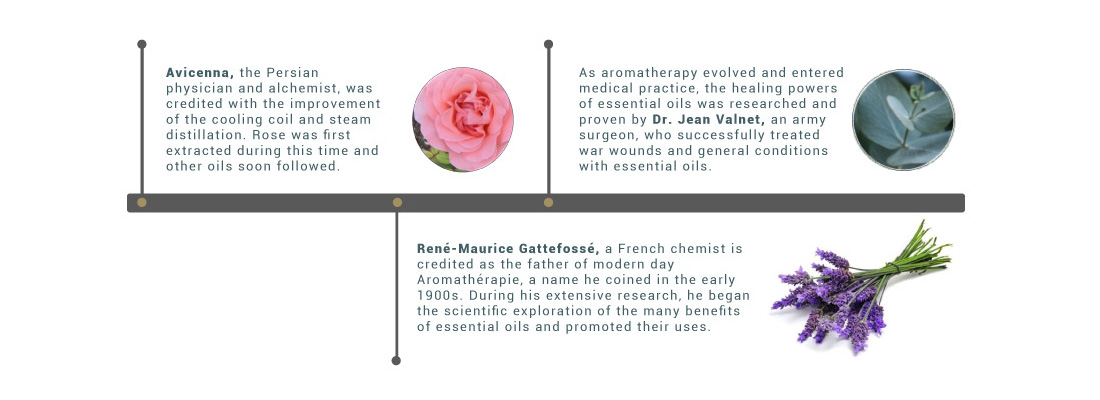
WHAT ARE Essential Oils
- Essential oils are derived from the living energies of plantsincluding flower petals, leaves, needles, berries, roots, bark, fruit rinds, resin and gum.
- Each essential oil has its own complex variety of chemical components and beneficial properties stimulating the body’s own mechanisms.
- Depending on their specific constituents and odour, essential oils are stimulating, refreshing, relaxing or balancing.
- They contain many wonderful properties to benefit body, mind and spirit at home, in the office or when travelling.
- Highly concentrated, only a few drops of these precious oils are needed to enjoy their natural benefits.
- For personal care, it is important to use 100% pure and natural essential oils to ensure maximum benefit.
- Synthetic or fragrance oils are man made not from nature – artificially produced and contain no benefits.
- Make sure to read labels carefully to ensure that the essential oils you use are genuine and the correct botanical species for your intended use.
- All quality essential oils must have a batch number and use by date on the packaging. See our Quality Assurance statement.
COMMON METHOD OF Extraction of Essential Oils

Steam Distillation
The most common method of extraction employs the use of steam to lift and carry the essential oils within the plant material to a collecting vat. The products of this process are essential oils and genuine aromatic waters known as hydrosols, waters of distillation or floral waters. Examples of oils produced are Eucalyptus, Lavender, Geranium, Peppermint, Rosemary.Water Distillation
The principle of water distillation is similar to steam distillation. This process is used for very delicate flowers, which if bruised or damaged, would produce an inferior oil. The two essential oils that are produced through this process are Rose Otto (Rosa damascena) and Ylang Ylang.

Expression – Cold pressing
This process literally squeezes the oil out of parts of the plant. It is the most common method of extracting oils from citrus fruits. The oil sacs are located in the rinds of these fruits.The essential oils produced in this matter are the cold pressed essential oils of Bergamot, Lemon, Lime, Orange, Grapefruit.
HOW DOES Aromatherapy Work
The tiny molecules of essential oils enter the body
through the skin, lungs and nose.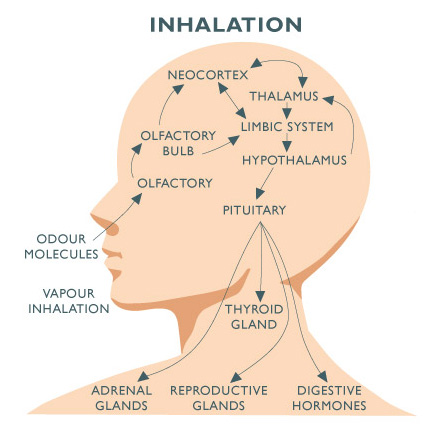
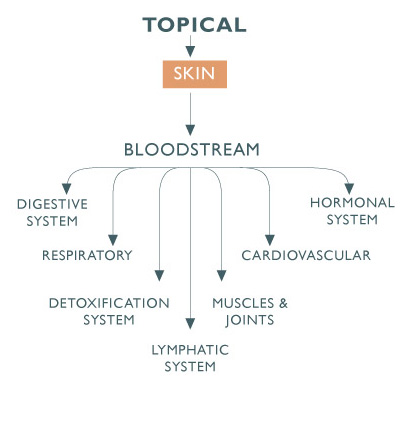
HOW DO ESSENTIAL OILS WORK
Skin Absorption

When massaged on the skin with a carrier oil, essential oils are absorbed through the skin and enter the blood stream and are carried throughout the body for wellbeing. The oils may penetrate the hair follicles or sweat glands, or just be absorbed via the skin cells of the epidermis.
HOW ESSENTIAL OILS ARE ABSORBED
Via Inhalation
When essential oils are inhaled, molecules of the oils reach the lungs and then enter the bloodstream. The tiny molecules also travel up the nose stimulating sensory nerves which convey messages to the brain and limbic system. Thus, essential oils are said to benefit body, mind and spirit when inhaled.
HOW TO USE Essential Oils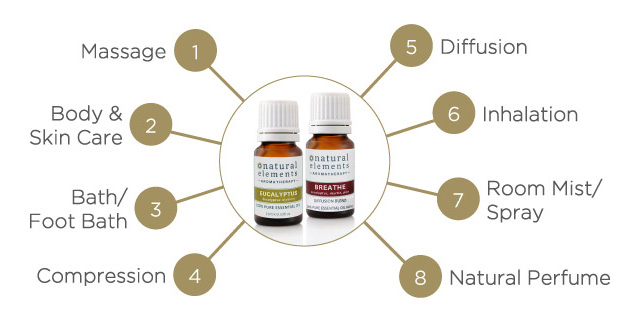
POINTS TO REMEMBERDO!
- DO remember: LESS IS BEST. Using more drops will not speed up the desired response.
- DO dilute essential oils in a carrier oil or lotion base before applying to the skin.
- DO take care with essential oils that are skin irritants, phototoxic or very powerful. Not all oils are for everyone take care if you have allergies.
- DO store essential oils in dark coloured glass bottles. Keep out of sunlight and tightly capped.
- DO keep essential oils away from children and pets.
DON’T- DO NOT apply essential oils directly on the skin.
- DO NOT take essential oils internally!
- DO NOT dilute in petroleum based oils such as baby oil as they can act as a barrier and inhibits the essential oils from penetrating the skin.
- DO NOT massage over wounds, sores, broken bones or inflamed areas.
- DO NOT stop using treatments recommended to by your medical professional. Essential oils are not a substitute for medical attention.
